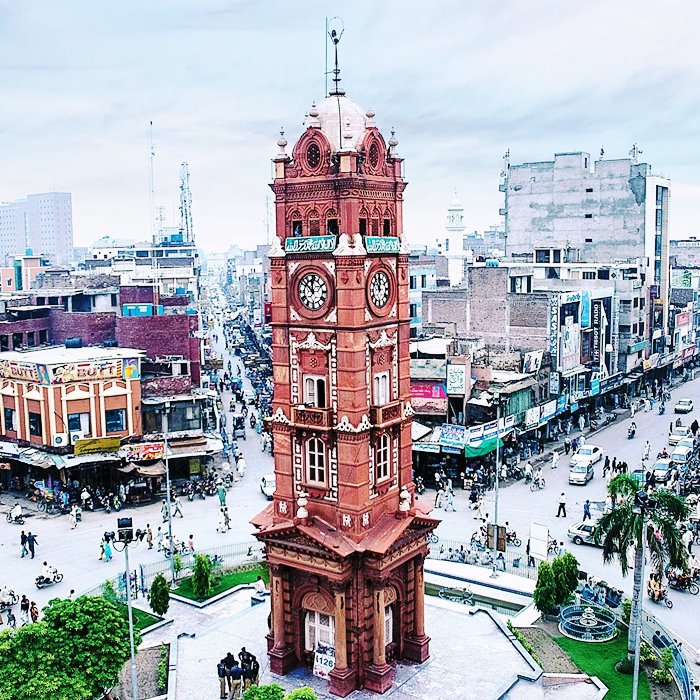Faisalabad City, located in the Punjab province of Pakistan, is known for its vibrant culture and bustling industrial sector. Commonly referred to as the “Manchester of Pakistan,” Faisalabad is a major hub for textiles, manufacturing, and agriculture. The city’s historic roots can be traced back to the Mughal era, with many architectural marvels still standing today, such as the Clock Tower and the Ghanta Ghar Chowk. Faisalabad is also famous for its local cuisine, with mouthwatering dishes like Faisalabadi Korma and Sardi Walla Murgh attracting food lovers from all over. The city is home to a diverse population that adds to its lively atmosphere, making it a unique blend of tradition and modernity. Whether you’re exploring the vibrant markets or enjoying a cup of chai at a local dhaba, Faisalabad offers an authentic experience that truly captures the essence of Pakistani culture.

Faisalabad is the third-most-populous city in Pakistan after Karachi and Lahore respectively, and the second-largest in the eastern province of Punjab. Historically one of the first planned cities within British India, it has long since developed into a cosmopolitan metropolis. Faisalabad was restructured into city district status; a devolution promulgated by the 2001 local government ordinance (LGO). The total area of Faisalabad District is 5,856 sq km (2,261 sq mi) while the area controlled by the Faisalabad Development Authority (FDA) is 1300 sq km (501.9 sqml) Faisalabad has grown to become a major industrial and distribution center because of its central location in the region and connecting roads, rails, and air transportation. It has been referred to as the “Manchester of Pakistan”. As of 2013, GDP (PPP) of Faisalabad was estimated as $43 billion and projected to rise to $87 billion in 2025 at a growth rate of 5.7%. Faisalabad contributes over 10 percent to the Punjab’s GDP and has an average annual GDP (nominal) of $20.5 billion. Agriculture and industry remain its hallmark.
The Faisalabad district is surrounded on the North and West by Hafizabad, Jhang and Toba Tek Singh districts respectively. In the East it touches Sheikhupura and in the South it is bounded by river Ravi, across which lies Okara. The district spreads over an area of 5856 Square kilometers comprising of following six tehsils:
- Chak Jhumra
- Faisalabad City
- Faisalabad Sadar
- Jaranwala
- Samundri
- Tandlianwala
The climate of the district touches two extremes. The maximum temperature in summer reaches up to 50°C (122°F). In winter, it may, at times falls below freezing point. The mean maximum and minimum temperature in summer are 39°C and 27°C respectively and in winter, 21°C and 6°C respectively. The summer season starts from April and continues till October. May, June and July are the hottest months. The winter season, on the other hand, starts from November and continues till March. December, January and February are the coldest months.
The soil is fertile but some areas are affected by salinity and water logging. Major crops and fruits of district Faisalabad are wheat, sugarcane, rice, maize, citrus, guava and mangoes. A variety of vegetables are also grown in the district.
